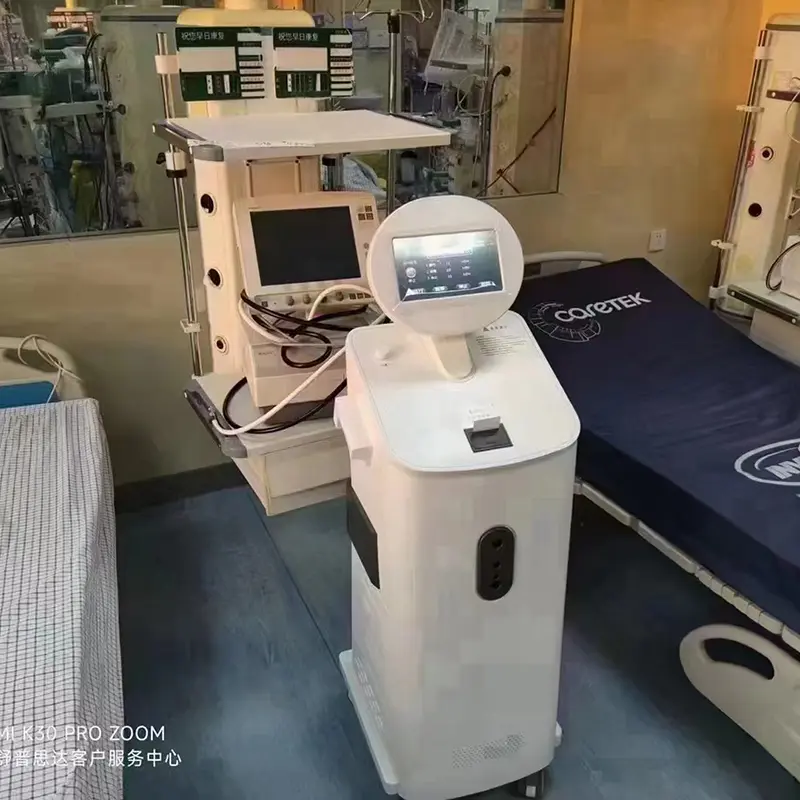Ventilator Internal Disinfection: Enhancing Infection Control in Critical Care
Introduction:
In critical care settings, ventilators play a crucial role in patient management and respiratory support. To ensure patient safety and minimize the risk of healthcare-associated infections (HAIs), proper ventilator internal disinfection is of utmost importance. Disinfecting the internal components of ventilators helps prevent the growth and transmission of harmful microorganisms. In this article, we explore the significance of ventilator internal disinfection, discuss different disinfection methods, and highlight best practices for infection control.
The Importance of Ventilator Internal Disinfection:
Ventilators have internal components that come into direct contact with the respiratory pathways and body fluids of patients. These components can harbor bacteria, viruses, and other pathogens, posing a potential threat to patient safety. Failure to disinfect ventilator internals properly can lead to device-associated infections and compromise patient outcomes. Effective disinfection helps mitigate the risk of HAIs and ensures a safer environment for critically ill patients.
Methods of Ventilator Internal Disinfection:
Manual Cleaning and Disinfection:
Manual cleaning is a common method for ventilator internal disinfection. After disconnecting the ventilator from the patient, the internal components, including breathing circuits, connectors, humidification chambers, and filters, are carefully removed. These components are then manually cleaned using appropriate cleaning agents, such as detergents or enzymatic solutions, to remove organic material, debris, and biofilm. After cleaning, they are disinfected using approved disinfectants specifically recommended by the manufacturer for ventilator internals. Detailed attention should be given to manufacturers' instructions to ensure the correct concentrations, contact time, and proper rinsing procedures.
Automated Disinfection Systems:
Automated disinfection systems offer an alternative approach to ventilator internal disinfection. These systems utilize technologies such as ultraviolet light or hydrogen peroxide vapor to achieve effective disinfection. Ultraviolet light systems expose ventilator components to specific wavelengths of light, killing a broad spectrum of microorganisms. Hydrogen peroxide vapor systems release a fine mist of hydrogen peroxide throughout the ventilator, reaching all internal surfaces for thorough disinfection. Automated disinfection systems can provide standardized and consistent disinfection processes while minimizing the risk of potential human error.
Best Practices for Ventilator Internal Disinfection:
Adherence to Manufacturer Guidelines:
Follow the manufacturer's instructions and recommendations for ventilator internal disinfection. Manufacturers provide specific guidelines on compatible cleaning agents, disinfection methods, concentrations, and exposure times. Compliance with these guidelines ensures optimum disinfection efficacy and minimizes the risk of device damage.
Regular Cleaning and Disinfection:
Incorporate regular cleaning and disinfection schedules into the ventilation management protocols. Disassemble and clean reusable components after each patient use, paying close attention to high-touch areas and hard-to-reach places where biofilm may accumulate. Strict adherence to routine cleaning and disinfection practices is crucial, even during times of low patient occupancy, to prevent the growth and spread of microorganisms.
Staff Training and Education:
Ensure healthcare providers receive comprehensive training on proper cleaning and disinfection techniques for ventilator internals. Education should include infection control best practices, understanding the risks associated with inadequate disinfection, and compliance with established protocols. Regular training updates and performance assessments help maintain a high standard of disinfection practice.
Quality Control and Monitoring:
Implement regular quality control measures to ensure compliance with disinfection protocols. This includes environmental monitoring, swabbing and culturing of high-touch surfaces, and conducting periodic audits or evaluations. These activities provide valuable insights into the effectiveness of disinfection practices and identify areas for improvement.
Documentation and Traceability:
Maintain comprehensive documentation of ventilator internal disinfection processes, including the date, time, cleaning agents used, and personnel responsible. Documenting these activities supports accountability, facilitates traceability in case of any device-associated infections, and contributes to monitoring the effectiveness of the disinfection program.
Conclusion:
Effective ventilator internal disinfection is crucial for infection control in critical care settings. Proper disinfection methods such as manual cleaning and disinfection or the use of automated disinfection systems help eliminate harmful microorganisms from internal ventilator components. Adhering to manufacturer guidelines, regular cleaning and disinfection, staff training and education, and quality control measures are essential to ensure optimum disinfection practices. By prioritizing proper ventilator internal disinfection, healthcare providers enhance patient safety, minimize the risk of device-associated infections, and provide critically ill patients with a safer environment for respiratory support.
